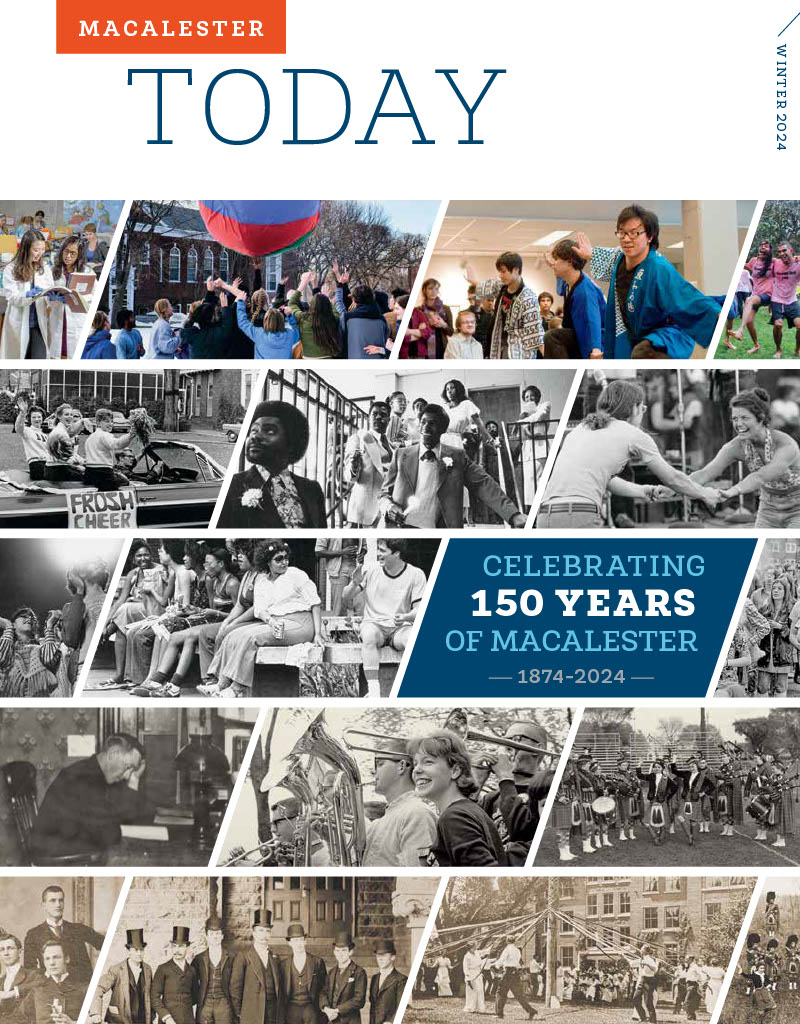
By Julie Hessler ’85 / Illustrations by Marjorie Leggitt
Sixteen miles from 1600 Grand, the college’s Katharine Ordway Natural History Study Area, commonly referred to as the Ordway Field Station or just Ordway, boasts a diverse landscape. The field station with its solar-paneled roof, is located on 278 acres, part of the National Park Service’s Mississippi National River and Recreation Area protected corridor that includes a mile of riverfront along the Mississippi River; a backwater lake; several freshwater ponds; an oak-dominated forest; a restored prairie; an older intact prairie; an Aspen-dominated woodland—and numerous vertebrates and invertebrates that dwell therein.
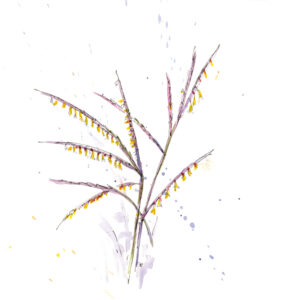
Macalester established the field station in 1967 with a gift of $150,000 from Katharine Ordway, a St. Paul philanthropist who used her wealth to protect Great Plains prairies. The field station is named in her honor.
Although Ordway’s Inver Grove Heights property is ready-made for studying biology, “it’s not just a biology place,” says Jerald Dosch, biology professor and Ordway’s director. “It’s a Macalester place—our second campus. All of Ordway revolves around undergraduate liberal arts education.” Its use proves him right. In addition to biology, the college’s departments of anthropology, art and art history, educational studies, English, environmental studies, geography, geology, and media and cultural studies have all used the facility in recent years for teaching and research.
The college’s new comprehensive campus plan includes a request to expand Ordway in the coming decade. But to understand what Ordway could be and could mean for future students, we wanted to know what Ordway is now. Open year-round by permission to members of the Mac community as well as to visitors, Ordway is an outdoor classroom, a research hub, and a space for discovery. Our field guide provides a look at some of Ordway’s flora and fauna—and at the lessons that Macalester students learn on and off its trails.
Let’s start with wonder.
Wonder.
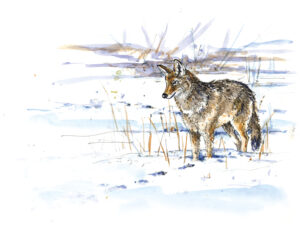
Bringing students to Ordway each winter is one of Dr. Mike Anderson’s favorite things to do. Anderson, Ordway’s associate director and resident naturalist and instructor for the Biology Department, lives onsite with his cat Nigel and knows the field station well. He uses Ordway for the Ecology and the Environment lab course that he teaches every spring. “We start in February, and there’s often so much snow on the ground that we have to trek in snowshoes,” he says. “Last year it was fifteen below the day we went down for our first field trip, with a windchill of twenty-five below. Many of the students had never been on snowshoes before, and they were anxious about going out in the weather. But the sun came out, and we provided chemical hand- and foot-warmers for everyone so they wouldn’t get frostbite. It was super quiet and there were [animal] tracks all around. You see the signs of life that are still happening, and it’s beautiful in a really stark way. The students learn that they can do this and go out and enjoy this, even though it’s so intimidatingly cold. To watch them change from that anxiety to a kind of wonder is really remarkable.”
Bringing the classroom outside.
“One of my favorite courses, and I’m biased because I help teach it, is Outdoor Environmental Education,” says Dosch. “I’m a deep believer in the importance of vocational exploration opportunities at Mac. In this course, students teach local elementary school children at Ordway. It gives Mac students an opportunity to try informal education outdoors, and takes it out of theory: Is this something I like or not? We’ve had alumni from that class go on to become professional outdoor environmental educators.”
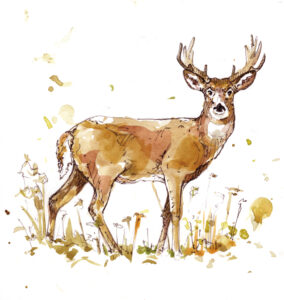
Ben Pritchard ’23 (Milwaukee, Wis.) is one of those alumni. After graduating in June, he began a one-year position as the naturalist fellow at the Dodge Nature Center in West St. Paul, where he works with naturalist Mary Dybvig ’14 and farm director Don Oberdorfer ’91. His role includes feeding and taking care of the center’s animals, and educating visiting school groups. “I’ll run anything from Trees to our Farm Tour class to Wilderness Skills and Introduction to Nature, which is just giving kindergartners their first experience of, ‘Wow, look at how cool these leaves look! Can you tell me what color, what shapes? How do you describe this?’”
Pritchard describes the Outdoor Environmental Education course he took at Mac as “hands-on learning.” The experiential course is interdisciplinary, drawing on education, biology, and environmental studies frameworks. Working in groups, students design and implement structured, engaging, and rigorous educational experiences for children at Ordway. Pritchard is proud of a seed game he created to help children learn how seed dispersal works. “The course is a great model for what I do right now,” he says. “I remember Jerald saying, ‘When the students come off the bus, you have to be ready and have all of the materials out there.’”
For the course’s final project, students create a two-week lesson plan aligned with state education standards, around a topic of their choice. Pritchard chose Bdote—the Dakota homeland at the confluence of the Mississippi and Minnesota Rivers near St. Paul’s Historic Fort Snelling—and the history behind the land.
Connecting the past and the future.
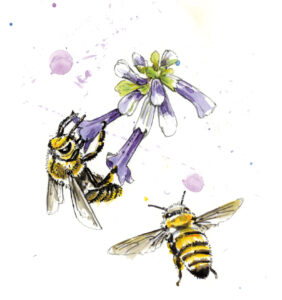
According to the Macalester Archives Counterbalance project, Ordway is the site of four archaeological digs containing material culture from previous Dakota inhabitants. In 2018, Abby Thomsen ’20 began a project to use these digs as a point of connection with contemporary Dakota communities. Thomsen’s collaboration with Dakota descendants to produce new interpretive signs for the Ordway sites was the subject of her 2020 honors project in anthropology.
In 2015, five students conducting an archeological survey with anthropology professor Scott Legge found a 2,500-year-old piece of pottery on their first day at Ordway. This was a particularly important discovery as pottery of that type had been found in southwestern Minnesota, but not in southeastern Minnesota. Later, in a second plot, they found stone-tool remnants.
Sculpting nature.
Art professor Megan Vossler took a group of students from her Drawing 2 course out to Ordway to create site-specific sculpture. They had studied the work of artist Andy Goldsworthy, who uses only materials he finds on site.
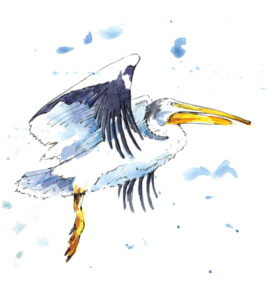
“We wanted to experience that type of process,” says Vossler. “The students were not allowed to bring any tools or materials with them.” Students used what they found and rearranged the items into a visual design that would peacefully coexist with the surrounding ecosystem.
Being a part of the hive.
At a September Beekeeping 101 event hosted by the Sustainability Office, twenty Macalester students and staff learned about beekeeping from Erin Rupp ’04, founder and executive director of Pollinate Minnesota. Rupp keeps approximately 100,000 honey bees at Ordway, using them to teach visitors about bees and how to make Minnesota better for pollinators and people. “It’s hard to be a bee these days,” says Rupp, as she and the students discuss threats to bees from habitat loss and pesticide exposure. Students learn about the number of different native bee species in Minnesota (approximately 500), as well as how to identify kinds of bees.
Later, the students don white beekeeping suits and protective hoods and follow Rupp down into a prairie below the field station. At the beehives, Rupp lights a bee smoker, explaining that the smoke helps keep the bees calm, and then she carefully lifts out one of the hive’s vertical trays housing hundreds of active honey bees. In turn, with Rupp’s instruction and warm encouragement, students delicately grasp the sides of the humming tray and hold it, watching the bees in action, and working together to identify the drones, workers, and, finally, the queen.
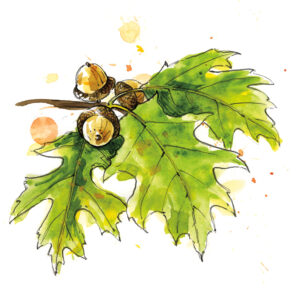
Back in the parking lot, the group samples fresh honey straight from the hive, dipping their fingers in the tray’s sticky golden pools and savoring the sweetness before returning home to campus.
Seeing the forest and the trees.
While undertaking a ten-week internship at Ordway last summer, Lindsey Gould ’25 (Sharon, Mass.) and other student research interns used twenty by twenty-meter plots set up across the Ordway forest, measured every tree’s diameter, and cataloged each tree’s condition—tracking things like overall health and signs of pest infestation.
Macalester belongs to the Ecological Research as Education Network (EREN), a group of small, primarily undergraduate institutions that do the same research projects with the same protocols and then combine those data to do large-scale studies across larger geographic areas.
The Ordway data were added to EREN’s Permanent Forest Plot Project (PFPP), which helps researchers address questions related to tree biomass, carbon accumulation, invasive species, and disturbance patterns across a range of sites and ecoregions.
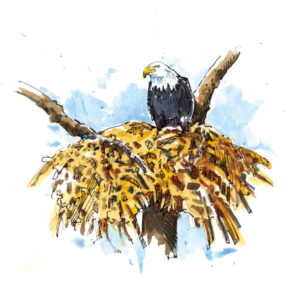
“The fact that I’m able to be here [at Mac] and have access to an urban area, and then go to Ordway and have that connection with nature is so important to me,” says Gould. A biology and chemistry double major, Gould describes moments from her summer living and interning at Ordway—eating breakfast each morning in front of the field station’s large picture window that frames Ordway’s prairie, exploring the muddy trails near the river, and watching a group of turkeys and poults meander across the property.
Using EREN tree data from the past decade, Gould created a data dashboard with RStudio, a statistical analysis software, for her final internship project. “I turned that into the first iteration of what could be a teaching tool for Ecology and the Environment, the intro-level biology class,” she says. “Students go out to Ordway and investigate oak decline. It’s kind of hard to notice if you’re not counting the trees, but over the past few decades, oaks worldwide have been dying off, and the causes aren’t well understood.”
Gould’s dashboard could help illustrate the proportional change in oak decline for new students. “I have three questions,” she says. “One: Of the living trees, how fast are they growing? Two: Where are the living trees? And three: Where are the dead trees? The last question is one of the most important things to look at. I didn’t make any conclusions; I didn’t do a traditional research project where I had a question and an answer. My question was, What can we do with all of this data? And here is one answer.”
Exploring civic engagement.
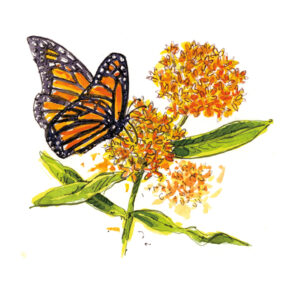
“People who spend more time outdoors understand the outdoors more, value the outdoors more, and probably make voting and purchasing decisions based on that,” says Dosch. “So Ordway is the sustainability of democracy as well.”
To learn about visiting Ordway, go to macalester.edu/ordway/visiting.
Julie Hessler is the managing editor of Macalester Today.
February 12 2024
Back to top